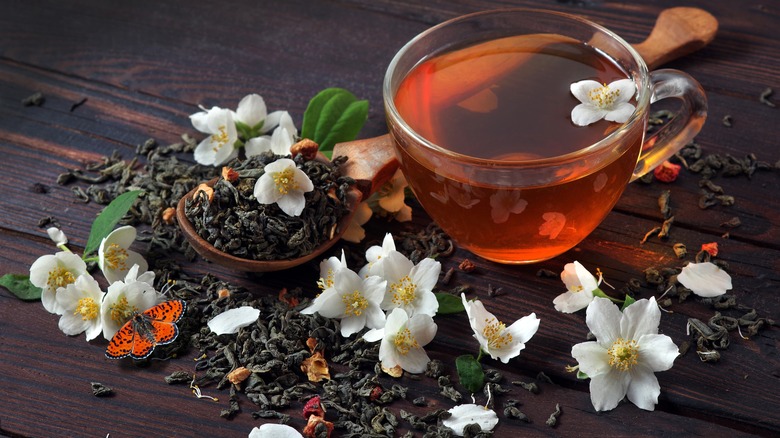What Exactly Is A Tea's Briskness?
If you are sharing a pot of tea with experienced drinkers, you might hear a reference to a particular tea's "briskness." This is a term that is used primarily with black tea, and it alludes to both the beverage's body and flavor, as well as its mouthfeel. It is often used in relation to a tea's astringency, but not exclusively.
Some teas, like black teas, go through an oxidation process that ultimately helps build their resulting flavor profiles. This is when the leaves are exposed to air, and it changes their color and taste, much the same as when cut fruit turns brown after sitting out for a while. Teas are largely classified by how much oxidation they have undergone. During this stage, flavanols within the tea get converted to compounds that give the tea full flavor and color. Briskness is essentially a measurement of these compounds and how they impact the tea's character after steeping.
Briskness vs. astringency
For many tea drinkers, briskness is used as a term to quantify how astringent a tea is. Astringency is the name for the interaction between the tannins in the tea and the saliva in your mouth. It results in a dry, puckering feeling. So the more brisk a tea is, the more of this astringent quality it has. Tannins (water-soluble polyphenols) are also present in wine, so you might hear reference to astringency by wine drinkers.
So why not just call the tea "astringent"? For some lovers of tea, briskness is a term that reaches beyond just astringency and also describes the fullness and robustness of the flavor. It is exuberant instead of flat, and strong without being bitter. Not fully separate from astringency, but not wholly limited to it, either. Briskness adds a depth of flavor that many tea drinkers appreciate and keep coming back for.

